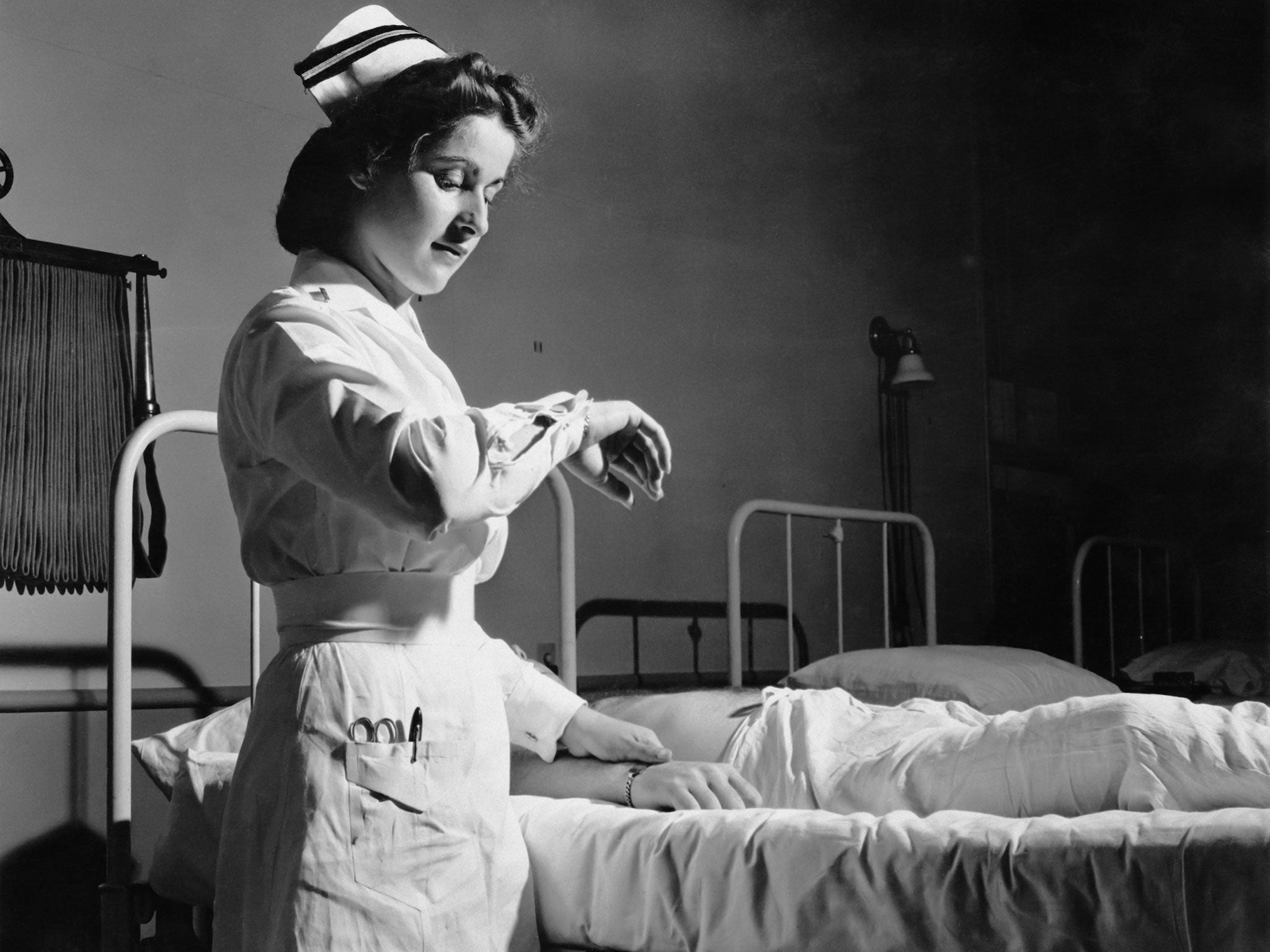LGBT rights: The brave nurses who supported people who underwent 'gay cures' in post-war Britain
Dr Tommy Dickinson, lecturer in nursing at the University of Manchester, explores the barbaric treatment of gay patients in hospitals - and the nurses who helped them

Your support helps us to tell the story
From reproductive rights to climate change to Big Tech, The Independent is on the ground when the story is developing. Whether it's investigating the financials of Elon Musk's pro-Trump PAC or producing our latest documentary, 'The A Word', which shines a light on the American women fighting for reproductive rights, we know how important it is to parse out the facts from the messaging.
At such a critical moment in US history, we need reporters on the ground. Your donation allows us to keep sending journalists to speak to both sides of the story.
The Independent is trusted by Americans across the entire political spectrum. And unlike many other quality news outlets, we choose not to lock Americans out of our reporting and analysis with paywalls. We believe quality journalism should be available to everyone, paid for by those who can afford it.
Your support makes all the difference.Things have changed immeasurably for the LGBT community in the UK since the repeal of the controversial and divisive Section 28 thirteen years ago – gay couples can now adopt, gay workers are protected in the workplace and they now have the right to enter into civil partnerships or marriage.
Hard to imagine then that up to as late as 1974, the British medical profession was using aversion therapies for homosexuality as a matter of course.
As the RCN celebrates 100 years of the nursing profession, it’s worth pausing to remember the nursing staff who had the courage and compassion to fight back during some of the health service’s darker days.
Homosexual men – and it was predominantly men – were institutionalised in British mental hospitals and given "treatment" for their "condition" – the most well-known being Second World War Code Breaker, Alan Turing. Following his arrest and prosecution for a relationship with another man, Turing was given the "choice" between a prison sentence or oestrogen treatment and died not long after. An open verdict was recorded but it’s since been widely argued that the man whose groundbreaking work saved thousands of life and hastened the end of WW2, took his own life.
I thought it was barbaric, I mean I remember thinking ‘where was the treatment?’
Whilst the majority were enduring chemical aversion therapy, the absence of protocols or medical guidelines for such treatment meant that in some cases homosexual and transsexual men were given electrical shock treatment in the most appalling of circumstances. Refused water and being forced to lie in their own vomit and faeces as matter of course, many likened their experiences to torture. But this wasn’t Nazi Germany – this was post war Britain – a country supposedly entering into a new and brighter future.
Those who experienced this treatment, many of them now in their 60s and 70s, painfully recall the medical and nursing profession’s complicity in it. There were, however, many nursing professionals who sought to provide compassion and caring to these battered and beleaguered men. These brave nurses show us that even in the worst of situations, compassion and kindness can still flourish.
These are nurses like Benedict Henry who I spoke to as part of my research, still vividly recalls seeing her first electric shock treatment.
She said: “I thought it was barbaric, I mean I remember thinking ‘where was the treatment?’ The young lad nearly jumped out of his skin with the jolt of the first shock. Then you could see it was almost mental torture waiting for the next one.”
Nurses like Benedict took huge professional risks by going against the medical status quo and treating their patients as human beings. They were told not to carry out simple caring tasks like talking to the patient but many ignored the decree and did so anyway. Benedict said: “Even though we were not really supposed to, I tried to sit down with the patient and offer them support.”
Mercifully, in this country, these practices have vanished. But the sad fact remains that in many corners of the globe and in countries as diverse as the United States and Uganda, persecution and discrimination still exist.
Chemical and electrical aversion therapies have by and large disappeared but they have, in some places, been replaced with psychoanalytical alternatives and herbal gay ‘remedies’.
Only last year, President Obama had to speak out against the rise of conversion and reparative therapies for transgender, gay, lesbian, bisexual and queer youth in America.
Homosexual and transsexuals still face barriers to acceptance and understanding. And as long as this remains the case, we need the brave Benedict Henrys of the world not to sink into the past but to remain a solid fixture of our future.
Curing Queers: Mental Nurses and Their Patients, 1935 – 74 by Tommy Dickinson is published by Manchester University Press and is now available in paperback.
Join our commenting forum
Join thought-provoking conversations, follow other Independent readers and see their replies
Comments